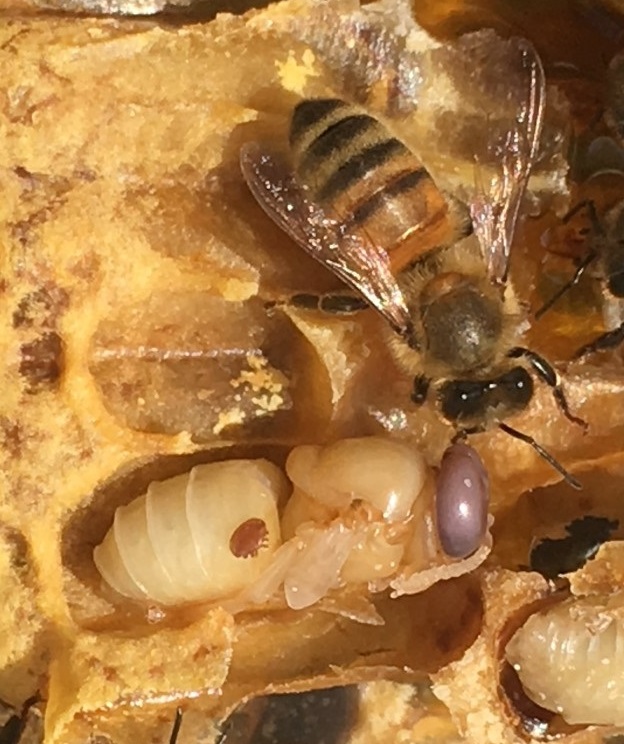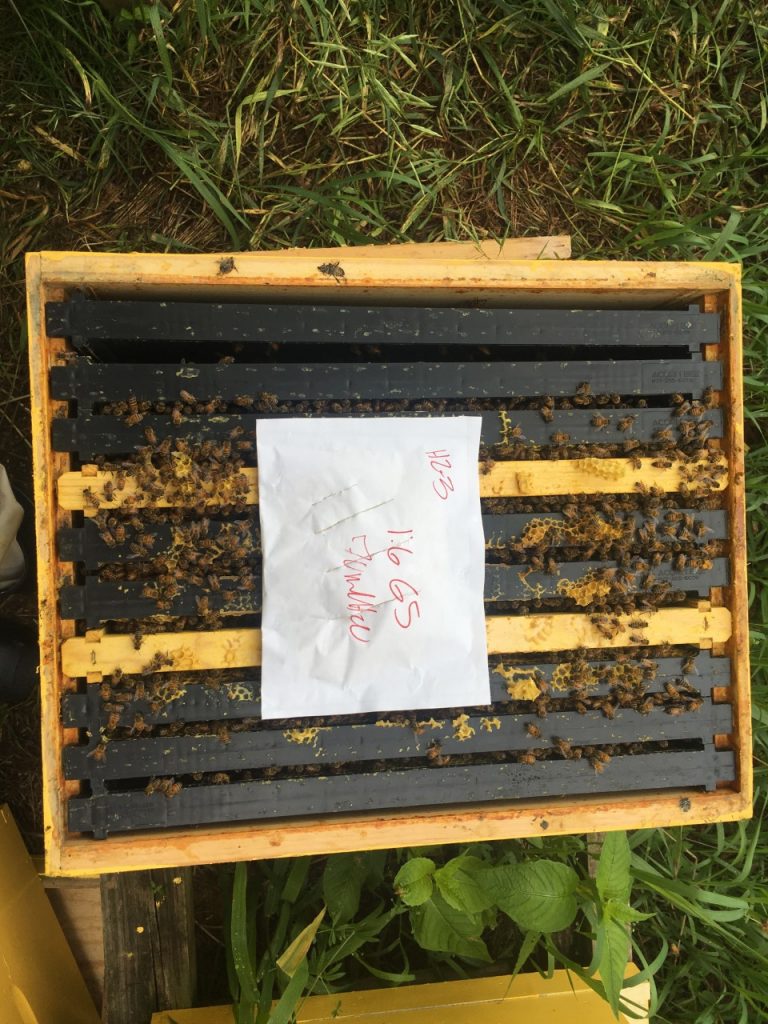Isaac Weinberg
To watch my honey bee spring inspection click here!
Spring has sprung, and the bees and butterflies have begun their return to Medford. If you’re like me, you may have wondered why insect pollinators were gone in the first place. Cold temperatures and lack of flowering plants make New England winters an inhospitable place for insects, yet year after year they return. Different species use different strategies to get through the winter months. Monarch butterflies dodge the cold by migrating south for the winter. Bumble bee queens sleep through the winter in subterranean burrows. Other insects lay eggs in fall that remain dormant in winter and hatch in spring.
Honey bees are unique in that they are the only insect pollinator that is awake and active throughout the entire winter. They are able to do this because of their massive colony size of up to 50,000 bees. Honey bees bunch up in their hive like emperor penguins and spend all winter shivering by flexing their wing muscles to keep their hive warm. Even in the coldest months of winter, honey bees can keep the temperature of their colony above 90 degrees Fahrenheit! In order to have energy to shiver all winter, honey bees hoard pounds of honey and pollen in the summer and fall which they eat for energy over the course of winter.

Recently, overwintering deaths of managed honey bee colonies in the US has been incredibly high, with almost 40% of colonies dying each winter. Over the winter it is very difficult for beekeepers to directly help colonies, since opening a hive and exposing it to the cold would be incredibly damaging. Because of this, many beekeepers to take an active hand in helping their bees in the early spring. The first cool days in spring are very dangerous. They have likely consumed all their food stores and, with few flowers yet blooming, there may be no way for them to restock. Spring is also when there are is an explosive increase in populations of Varroa destructor, a parasitic mite that latches on to honey bees and eats their fat bodies. In the spring it is often critical for beekeepers to supplement the nutrition of their colonies, and keep the mite population under control in order to have strong healthy hives during the year.
Honey bees get most of their nutrients from different flower products, they collect sugar rich nectar to make honey which adult bees use as their main source of energy, and protein rich pollen which is fed to larvae to help them grow. In order to help supplement the diets of bees, beekeepers can feed their colonies sugar solution, and synthetic pollen patties. One type of pollen patty is made using bee collected pollen and mixing it with a 1:1 sucrose:water solution until it has a clay like consistency. In the absence of pollen, other supplements like yeast, protein powder, and eggs can be mixed with sugar water to create patties. Patties can then be made available to the bees by simply placing them in the center of the beehive.

Next, many beekeepers treat for the mite Varroa destructor. Varroa is one of the biggest contributors to honey bee decline in the United States. The mite latches on to honey bees and feeds on their fat bodies, draining nutrient reserves, and spreading disease throughout a colony. The mites primarily target honey bee larvae, and reproduce by laying their eggs directly on honey bee brood. As honey bee colonies begin to rear large amounts of brood in spring mite populations also increase exponentially. For this reason, it is important to treat for mites before a colony begins its spring uptick in brood rearing. There are many ways beekeepers treat for Varroa, which vary both in their efficacy combatting Varroa and in their lethality to the honey bees themselves. One of the most common treatments are Apivar strips because they are easy to use, relatively benign for the honey bees, and deadly to the mites. The strips can be easily hung in a honey bee hive and paralyze mites, preventing them from feeding. Because the active ingredient in Apivar is an arachnicide, it acts on the spider-like mites without causing excessive harm to the honeybees, and also does not linger for long in the hive once removed.
Though winters are an energetically demanding time for honey bees, and the early days of spring can be dangerous with temperature fluctuations and limited flowers (especially in New England where we get snow in April!), beekeepers can take an active hand in ensuring colony success. By supplementing food in early spring, treating colonies for mites, and being careful to leave some honey for the bees during fall collections, beekeepers help their colonies start the year on a strong footing and remain healthy and productive all year round!

